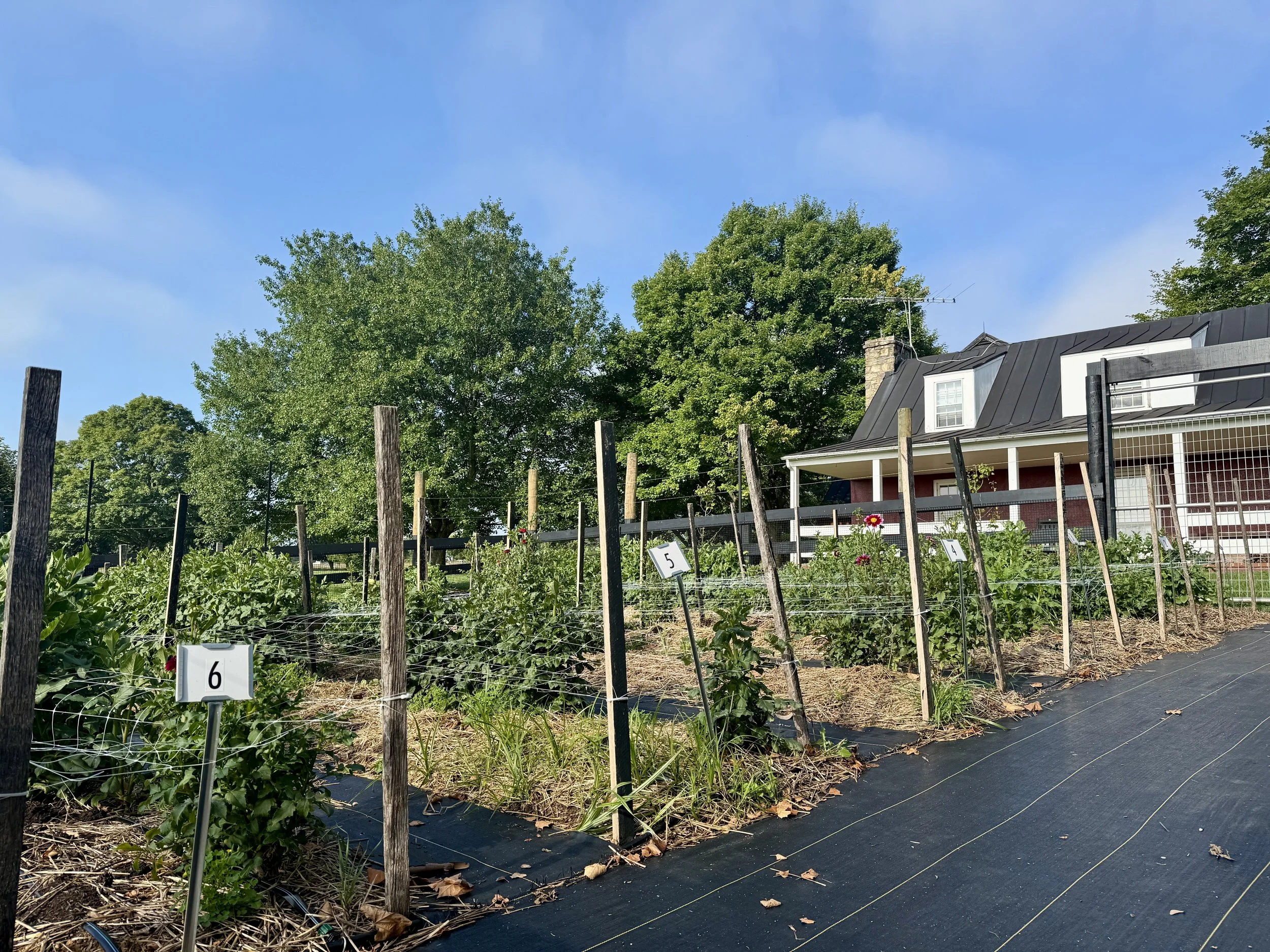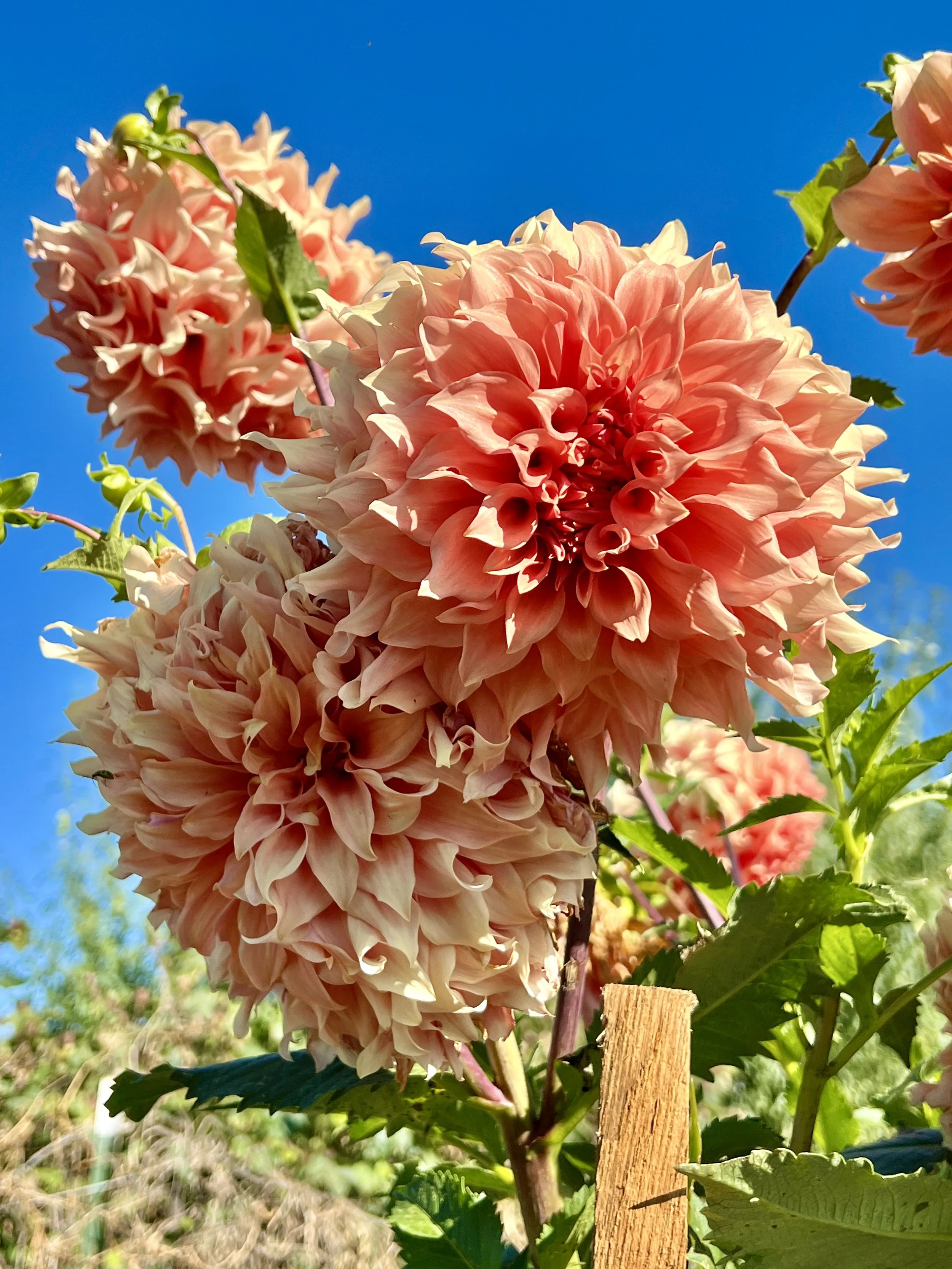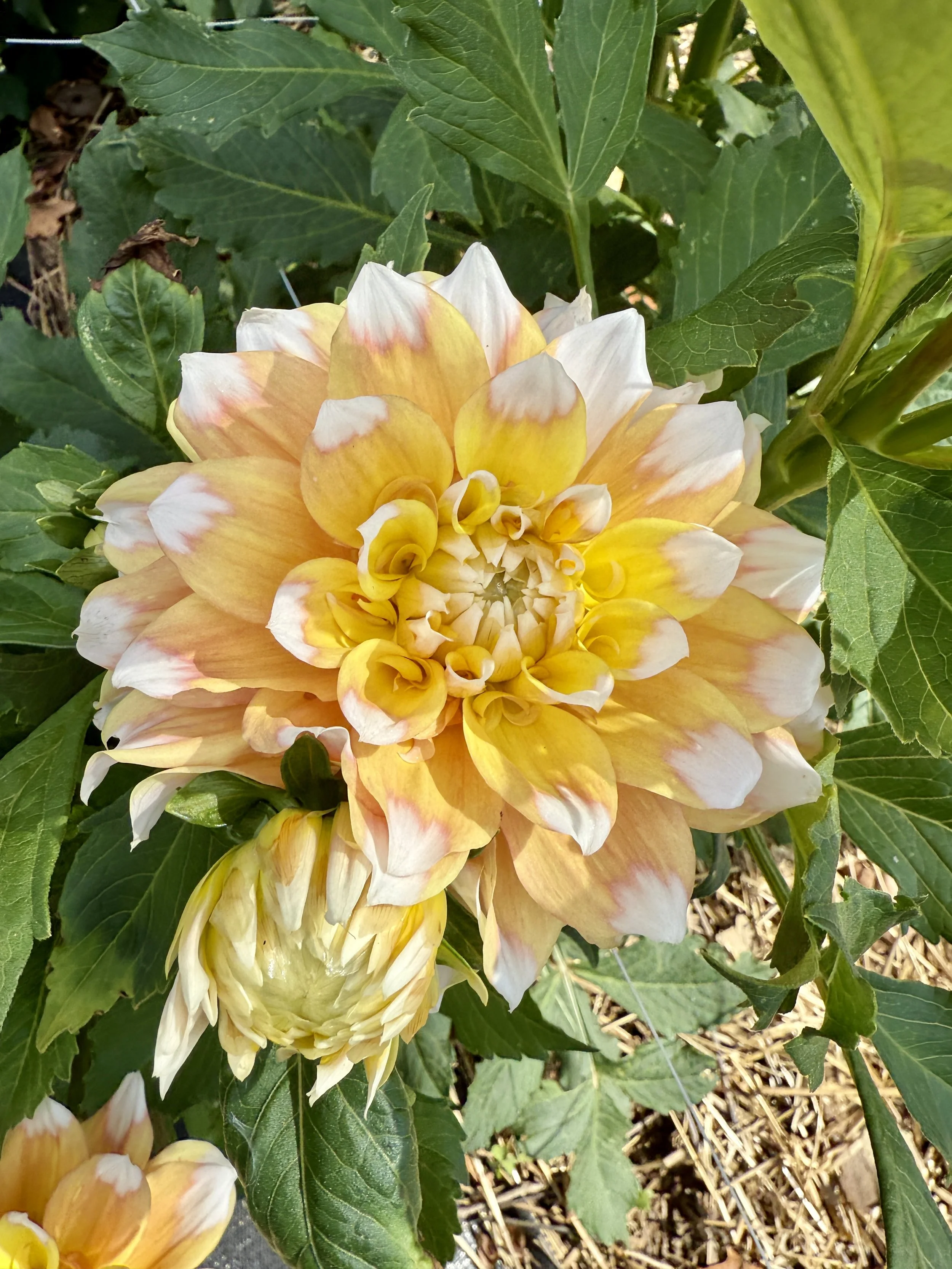Growing Dahlias in Zone 7a
OSGF
New Dahlia Cut Flower Project
In the spring of 2025, a new dahlia cut flower garden was created near the existing cut flower garden at Oak Spring Garden Foundation. While this garden isn’t a part of our traditional garden tour, it is a hidden gem and deserves some attention for its beauty. It is vibrant and full of life, especially in the fall when many plants have gone to rest. We’re curious not only about their beauty, but about how dahlias perform in our region. One of our main goals is to learn how dahlias overwinter in our climate and find the most resilient varieties.
Trialing Dahlias
Located in USDA Zone 7a, our climate doesn’t reliably support dahlias overwintering in-ground. Still, we’re intrigued by this possibility. This season marks the beginning of a multi-year trial to observe which varieties reemerge in the spring and how they respond to the rhythms of our climate. We’ll be collecting notes over time and sharing our findings with the public to help others explore the potential of dahlias in similar zones.
Since this is our first year planting in this area, we’ve intentionally left space in our beds to expand our plantings as we learn. Every dahlia variety was carefully recorded to support the long-term assessment of which plants survive and thrive over time.






Dahlia Cut Flower Uses
While overwintering trials are the main focus, the dahlias also play a vital role in many of our programs. They are used in our floral arranging workshops, distributed through the CSA program, and harvested for floral displays at events and short courses. Even though each bloom may last only 4-7 days, dahlias are still considered a great cut flower and crowd favorite with so many shapes, sizes, and colors to choose from. With 21 recognized dahlia forms ranging in size from under 2 inches to as large as 16 inches (Albrecht), they offer endless possibilities for designing unique arrangements.
Designing the Color Gradient
My personal focus for this project was to organize the dahlias in an intentional and visually striking way. As a visual artist I utilize my understanding of color to design the garden as a sweeping gradient—each row dedicated to a primary hue, flowing seamlessly into the next. This approach not only enhances visual impact but also makes it easier to locate specific varieties and conduct breeding work, which is often more successful when done with similar color groups.
To achieve this, I researched each variety extensively, categorizing them by color and tone (variations of color from light to dark). Dahlias, however, are notoriously mysterious when planted. Because they grow from tubers, underground stem structures, it’s impossible to know what the flowers will look like just by examining them. This made organization and labeling absolutely essential. Without clear records, tubers can easily be misplaced or misidentified once planted.










After planting, the slow emergence of life from the soil brought both excitement and anticipation. I had carefully sorted the dahlias into warm and cool color groups. I studied images of each variety, squinting to detect the subtle undertones of color and often finding hints of yellow or blue. For example, true red dahlias often revealed yellow undertones, so I placed them with the warmer colors. Most magenta varieties leaned towards blue, so I grouped them with the cooler tones. This detailed color analysis was one of the most critical steps in creating a harmonious gradient. Once I understood the tone of each dahlia, I compared them side by side, listing their colors and searching for similarities to help each hue transition effortlessly into the next.
The Surprise
Despite my diligence, surprises still emerged. When the dahlias began to flower, I was thrilled and then confused when I spotted a massive hot pink dinnerplate dahlia blooming in the purple row. Perplexed, I revisited my notes and double-checked the variety. After some deep digging, I found comments on the seller’s website confirming that others had also received hot pink blooms from ‘Shiloh Noelle’ which was advertised as having lavender blooms. It was a humbling reminder that sometimes the seller’s photos don’t accurately depict what the blooms will be.







Looking Ahead
This is just the beginning for the dahlia cut flower bed. With many open spaces waiting to be filled, we have room to continue to explore which varieties can thrive through our winters and expand the palette of blooms available for cutting. Each season offers a new opportunity to observe, adapt, and refine our approach. As we trial more cultivars and document their performance, we’re not only building a more resilient and diverse garden, but we’re also cultivating knowledge to share with others who are curious about growing dahlias in Zone 7a.
Thank you to our Horticulture Apprentice, Megan Larson, for her time and insights on this blogpost. Photography: Tiffany West. Drone video footage and additional images: Joshua Rector.
About Megan:
Megan Larson is currently a Horticulture Apprentice at Oak Spring Garden Foundation. From 2022-2024, she studied and worked in horticulture at the Barnes Arboretum at Saint Joseph’s University in Lower Merion, PA. Megan holds a Bachelor's of Fine Art from Minnesota State University Moorhead and spent many years teaching art and literacy.
Resources:
Albrecht, K. (2020). Dahlia Breeding for the Farmer-Florist and Home Gardener.

